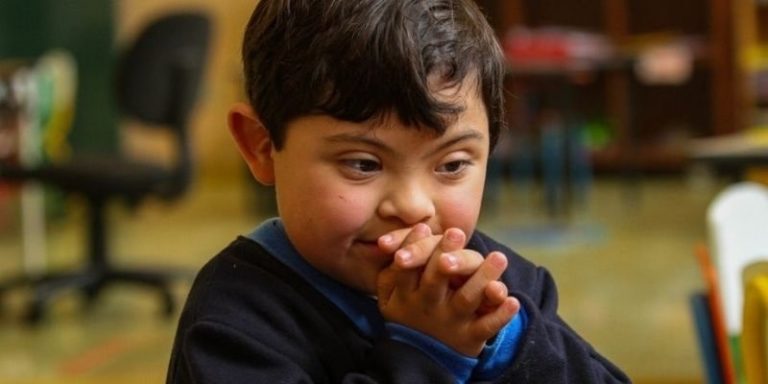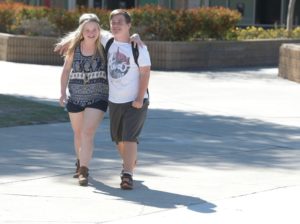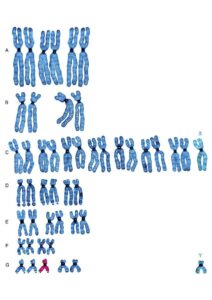World Down Syndrome Day: What It’s About and How to Join In
What is Down Syndrome, and how does it affect those born with it?
By: Laura Valkovic | March 21, 2022 | 891 Words

(Photo by Rafael Rodriguez Mayel/picture alliance via Getty Images)
It’s March 21 – also known as World Down Syndrome Day. The event aims to raise awareness of the genetic condition. It also hopes to boost support for people born with Down Syndrome, making sure they are treated equally and included in the activities other people enjoy. One way to participate is to wear colorful or mismatched socks – so why not grab some bright socks and keep your feet cozy while making a statement?
Down Syndrome was named after the British doctor John Langdon Down who first described the condition in 1862. However, it seems Down Syndrome has always existed, and it affects people in every part of the world.

(Photo by Jeff Gritchen/Digital First Media/Orange County Register via Getty Images)
Do you know anyone who has Down Syndrome? In the United States, it’s thought that about one in every 700 babies is born with it – that’s about 6,000 each year. But what is Down Syndrome, and how does it affect people born with it?
Characteristics of Down Syndrome
Just like everyone else, people born with Down Syndrome are unique, with their own personalities, talents, and interests. However, there are some characteristics they share.
Some of these include physical traits, and people with the condition can often be recognized by a round face shape and small stature. Down Syndrome also makes learning difficult, and people with the condition may need help or extra time to process new information.

Trisomy 21 – an extra 21st chromosome can be seen. (Photo By BSIP/Universal Images Group via Getty Images)
Unfortunately, people with Down Syndrome can suffer from a range of health problems, such as hearing loss, ear infections, heart problems, eye disease, and difficulty breathing while asleep (sleep apnea). It can also cause difficulties with speech. Physical and speech therapy can help with these areas.
There is no treatment or “cure” for Down Syndrome, and no one can really predict when it will occur. However, most people with Down Syndrome can have a good quality of life; they may just need a little extra help, and to check up on their health regularly. Otherwise, they can make friends, play sports, attend school or work, and explore their own interests in life.
What Causes Down Syndrome?
Down Syndrome is a genetic condition – that means it occurs in a person’s DNA. To learn what causes it, we have to look at the basic building blocks of life.
A human body is made up of billions of tiny cells, and inside those cells are our genes. Genes are built from DNA, which contains the “instructions” for how we are made. They include information that determines how you look, whether you are a boy or girl, and other physical traits. Genes are found on strings called chromosomes. Chromosomes and genes appear in every cell of our bodies, and normally each cell has 46 chromosomes. But chromosomes don’t like to be alone – they prefer to pair up. So, most people have 23 pairs of chromosomes per cell. This is where people with Down Syndrome are different – they have an extra chromosome, making 47 in total. They have an extra copy of Chromosome 21.

Irish rugby team supports the ‘Lots of Socks’ campaign. (Photo By Ramsey Cardy/Sportsfile via Getty Images)
Another name for Down Syndrome is Trisomy 21. A “trisomy” is a medical condition where someone has three of a certain chromosome, instead of two. There are three types of Down Syndrome, but about 95% of cases are Trisomy 21. In that type, every cell in the body has an extra chromosome 21.
According to the World Down Syndrome Day (WDSD) website, the date March 21 wasn’t chosen by chance:
“The date for WDSD being the 21st day of the 3rd month, was selected to signify the uniqueness of the [trisomy] of the 21st chromosome which causes Down syndrome.”
Wearing Colorful Socks?
The “Lots of Socks” campaign was created because, when you look at a magnified photo of chromosomes, they look like pairs of socks. Since people with Down Syndrome have an odd number of “socks,” the idea for wearing bright or mismatched socks began.
Here are a few events taking place this year to support the event:
- In Croatia, the city of Slavonski Brod added one pink and one blue sock to a local statue of a shoemaker’s apprentice.
- Cyclists in Antigua and Barbuda donned colorful socks to take part in the World Down Syndrome Fun Ride. The cycling group has planned a whole week of fun events for the public.
- In Saginaw, Michigan, father Matt Lockwood is collecting socks. Over the past few weeks, he’s bought enough pairs to give one to every student in the Hemlock Public School District.
- The New York legislature is honoring John’s Crazy Socks, a shop run by a father and son team. John Cronin has Down Syndrome, and it was his dream to start a business selling the cozy foot coverings. With the help of his father Mark, the shop is now the world’s largest sock store. They sell 4,000 different designs, including some to promote World Down Syndrome Day.
For more information on how a baby is born with Down Syndrome, check out this short film Chromosomes R Us:
















